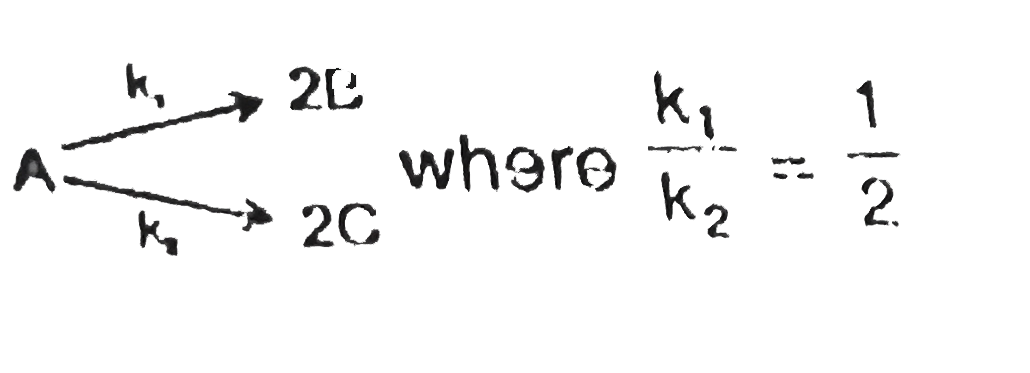For given hypothetical elementary parallel reaction,

Intially only 2 moles of A are present. The total no. of moles of A, B and C at the end of 75% reaction are:
2
3
4
3.5
The correct Answer is:D
Topper's Solved these Questions
- CHEMICAL KINETIC & NUCLEAR CHEMISTRYBOOK - NARENDRA AWASTHICHAPTER - CHEMICAL KINETIC & NUCLEAR CHEMISTRYEXERCISE - Level 2 (Q.33 To Q.35)
2 Videos
- CHEMICAL KINETIC & NUCLEAR CHEMISTRYBOOK - NARENDRA AWASTHICHAPTER - CHEMICAL KINETIC & NUCLEAR CHEMISTRYEXERCISE - Level 3 - Passage
1 Videos
- CHEMICAL KINETIC & NUCLEAR CHEMISTRYBOOK - NARENDRA AWASTHICHAPTER - CHEMICAL KINETIC & NUCLEAR CHEMISTRYEXERCISE - Level 2
2 Videos
- SURFACE CHEMISTRYBOOK - NARENDRA AWASTHICHAPTER - SURFACE CHEMISTRYEXERCISE - Level 3 - Assertion - Reason Type Questions
1 Videos
Similar Questions
For a hypotherical elementary reaction
 where k1k2=12
where k1k2=12
Initailly only 2 moles of A are present.
The total number of moles A,B and C at the end of 50% reaction are :
View SolutionFor a hypotherical elementary reaction
 where k1k2=12
where k1k2=12
Initailly only 2 moles of A are present.
The sum of mole of (B) are ( C) at end of reaction is :
View Solution
Knowledge Check
For a hypotherical elementary reaction
 where k1k2=12
where k1k2=12
Initailly only 2 moles of A are present.
The total number of moles A,B and C at the end of 50% reaction are :A2B3C5DNoneFor a hypotherical elementary reaction
 where k1k2=12
where k1k2=12
Initailly only 2 moles of A are present.
The sum of mole of (B) are ( C) is :A2B3C1D4For a hypotherical elementary reaction
 where k1k2=12
where k1k2=12
Initailly only 2 moles of A are present.
Number of moles of B are:A2B1C0.666D0.333
For a hypotherical elementary reaction
 where k1k2=12
where k1k2=12
Initailly only 2 moles of A are present.
Number of moles of B are , if reactions gets 50 % completed :
View SolutionA+3B↔2C+D
For this hypothetical reaction, initial moles of A is twice that of B. If at equilibrium, moles of B and C are equal, the percent of B reacted is :
View SolutionIn the following hypothetical reaction
A+3B⇔2C+D
initial moles of A are twice that of B. If at equilibrium moles of B and C are equal. Percentage of B reacted is
View SolutionIn the following hypothetical reaction, A+3B⇔2C+D initial moles of A are twice as that of B. If at equilibrium moles of B and C are equal. Percentage of B reacted is
View SolutionWhen one mole each of CO and O2 are made to react at STP, the total number of moles at the end of the reactions is
View Solution
